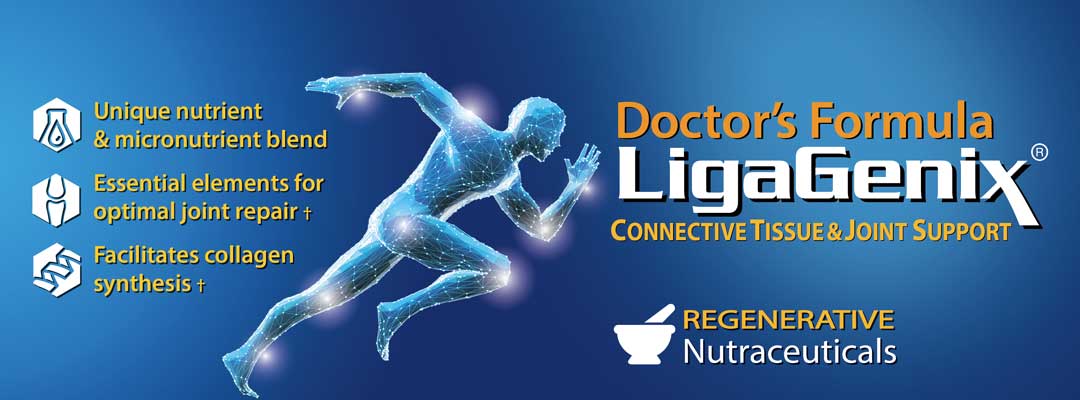

Silicon plays a very important role in collagen formation. It is one of the top ten most abundant elements in the body and important for construction and healing of ligaments, tendons and joints. Observational and interventional studies have shown favorable correlations between silicon consumption and health of joints and connective tissue [1]. Silicon's effectiveness in increasing collagen production appears to be related to its ability to activate a needed biochemical reaction [2] Silicon is rarely found in common dietary supplements, especially in the highly bioavailable form found in the LigaGenix formulation. Stabilized orthosilicic acid has been found to improve collagen concentrations and stimulate type I collagen synthesis in multiple studies[3] [4] [5] [6]. LigaGenix provides this bioavailable form of silicon in addition to other nutrients and micronutrients, needed for connective tissue and joint repair, making it the perfect all-in-one supplement for use after Prolotherapy and/or Platelet Rich Plasma, and/or other regenerative injection treatments, as well as after sports injuries.
Article:
Biological and therapeutic effects of ortho-silicic acid and some ortho-silicic acid-releasing compounds: New perspectives for therapy, article in Nutrition & Metabolism 2013, 10:2 http://www.ncbi.nlm.nih.gov/pmc/articles/PMC3546016/pdf/1743-7075-10-2.pdf
References:
Vitamin C is essential for the production of collagen, the primary protein comprising connective tissue. Vitamin C (also known as ascorbic acid) is involved in collagen synthesis at every level. The precursor to collagen, procollagen, is made up primarily of the amino acids glycine and proline, obtained through the diet. The formation of procollagen has been shown to increase eight-fold with prolonged exposure to vitamin C. In the conversion from procollagen to collagen, the proline must be hydroxylated (have a hydroxyl group added). Then, in order to become mature collagen, lysine, another amino acid, is converted into hydroxyl-lysine. These two hydroxylation reactions are catalyzed by two different enzymes: prolyl-hydroxylase, and lysyl-hydroxylase. Vitamin C is a cofactor in both of these enzymatic reactions. In a Korean study, vitamin C increased the expression of the enzyme prolyl-hydrolase, by 1700%. However when vitamin C is used in these biochemical reactions one molecule of vitamin C is destroyed for each single reaction. For this reason, vitamin C stores must be continuously replenished in order to sustain collagen synthesis.
Articles:
Vitamin C and Human Wound Healing, from Oral Surg Oral Med Oral Pathol. 1982 Mar;53(3):231-6. pubmed.ncbi.nlm.nih.gov/7038579/ The Biochemical Role of Abscorbic Acid in Connective Tissue.
Efficacy-Vitamin-C-Supplementation-Collagen Synthesis-Oxidative-Stress-After-Musculoskeletal-Injuries.pdf
References:
Murad S, Grove D, Lindberg KA, Reynolds G, Sivarajah A, Pinnell SR. Regulation of collagen synthesis by ascorbic acid. Proceedings of the National Academy of Sciences. 1981 May 1;78(5):2879-82; Myllylä R, Majamaa K, Günzler V, Hanauske-Abel HM, Kivirikko KI. Ascorbate is consumed stoichiometrically in the uncoupled reactions catalyzed by prolyl 4-hydroxylase and lysyl hydroxylase. Journal of Biological Chemistry. 1984 May 10;259(9):5403-5; Lee JA, Cho Y. Effect of ascorbic acid, silicon and iron on collagen synthesis in the human dermal fibroblast cell (HS27). Federation of American Societies for Experimental Biology. 2008 Apr;22:672-.
Boron's function in collagen production is primarily as a cofactor. It is necessary for proper utilization of the minerals calcium, magnesium, and phosphorous. Boron has been shown to increase bone growth and strength, and it contributes to cartilage maturation. Boron supplementation has also been shown to increase testosterone levels in postmenopausal women, which, in turn, improves collagen production.
Articles:
Essentiality of boron for healthy bones and joints, article in Environmental Health Perspectives 102 Suppl 7(Suppl 7):83-5 · November 1994 Read the full article
References:
Newnham RE. Essentiality of boron for healthy bones and joints. Environmental Health Perspectives. 1994 Nov;102(suppl 7):83-5.
Potassium helps in wound healing. In an animal study, the test animals given a potassium supplement had healing of their wounds four days earlier than the controls. Granulation and epithelialization of the wounds took place sooner and more actively, and the wounds were filled with many more fibroblasts of all ages, as compared to controls. Potassium assists in making proteins from the building blocks of amino acids and is necessary in the building of muscles.
References:
Dudnikova GN, Zaidenberg MA. Morphological and biochemical investigation of stimulated collagen formation. Bulletin of Experimental Biology and Medicine. 1981 Feb 1;91(2):235-7.
Magnesium is a critical component of collagen formation and repair. Chronic magnesium deficiency can lead to defective collagen formation over time. Basically what this means is that when magnesium deficiency is present, it is believed that the old collagen cells that need to be replaced get replaced with unhealthy calcified cells rather than flexible new healthy cells. In the case of connective tissue such as joints, ligaments and tendons, this can lead to a susceptibility to joint problems, tendonitis and ligament issues, osteoarthritis, and other connective tissue dysfunction.
Articles:
Magnesium and connective tissue
Magnesium Research. Volume 16, Number 1, 70-4, March 2003, ORIGINAL ARTICLE Magnesium-and-connective-tissue.pdf
References:
Senni K, Foucault-Bertaud A, Godeau G. Magnesium and connective tissue. Magnesium Research. 2003 Mar 1;16(1):70-4.
Manganese strengthens tendons, tissues, and ligaments. It activates key enzymes in the production of collagen, which is in turn allows the manufacture of connective tissue, bone, and cartilage. Manganese has also been shown to help in the prevention of carpal tunnel syndrome.
Article/References:
Freeland-Graves JH, Mousa TY, Kim S. International variability in diet and requirements of manganese: Causes and consequences. Journal of Trace Elements in Medicine and Biology, 2016 Dec;38:24-32. https://pubmed.ncbi.nlm.nih.gov/27264059/
The sulfur-containing amino acids, methionine and cysteine, are integral to the production of both collagen, and keratin. Molybdenum is used in the body as part of a complex called molybdenum cofactor. Molybdenum cofactor is required for the enzyme sulfite oxidase, which is used in the metabolism of sulfur-containing amino acids.
Articles:
Essential trace minerals in man: Molybdenum, article in Journal of Chronic Diseases, Volume 23, Issue 7, December 1970, Pages 481-499 http://www.sciencedirect.com/science/article/pii/0021968170900561
Grape seed extract (GSE) contains proantho-cyanidins. These compounds have potent anti-oxidant properties, and have a high affinity for collagen fibers in the body. They appear to work both by increasing the production of new collagen as well as inhibiting its breakdown. They strengthen the collagen by their presence, and protect it from free-radical,and inflammatory,damage. GSE inhibits the activity of the enzymes that break down collagen (hyaluronidase, elastase, and collagenase), and thereby decreases the breakdown of connective tissue in general and collagen in particular.
References:
Ames BN, Shigenaga MK, Hagen TM. Oxidants, antioxidants, and the degenerative diseases of aging. Procedures of the National Academy of Sciences U S A. 1993;90(17):7915-7922; Zafirov D, Bredy-Dobreva G, Litchev V, Papasova M. Antiexudative and capillaritonic effects of procyanidines isolated from grape seeds (V. Vinifera). Acta physiologica et pharmacologica Bulgarica; 1990;16(3):50-4.
Copper plays an essential role in the production of collagen, and works with vitamin C to make another connective tissue protein called elastin. Elastin is important for elasticity and flexibility of the tissue. It is well established that the maturation of numerous tissue collagens depends on dietary copper.
Articles:
Copper and amine oxidases in connective tissue metabolism, chapter in Protein-Metal Interactions, Volume 48 of the series Advances in Experimental Medicine and Biology pp 267-284 http://link.springer.com/chapter/10.1007/978-1-4684-0943-7_13
References:
Opsahl W, Zeronian H, Ellison M, Lewis D, Rucker RB, Riggins RS. Role of copper in collagen cross-linking and its influence on selected mechanical properties of chick bone and tendon. Journal of Nutrition. 1982 Apr;112(4):708-16.
Bioflavinoids are essential for the absorption and utilization of vitamin C. The bioavailablity of vit C is enhanced with bioflavinoids, and keep vitamin C from being oxidized by certain enzymes. Bioflavinoids also assist in keeping collagen in a healthy condition.
References:
Teixeira S. Bioflavonoids: proanthocyanidins and quercetin and their potential roles in treating musculoskeletal conditions. Journal of Orthopaedic & Sports Physical Therapy. 2002 Jul;32(7):357-63; Rice-Evans CA and Miller NJ. Antioxidant activities of flavonoids as bioactive components of food. Biochemical Society Transactions 1996;24:790-795; Jonadet M, Meunier MT, Villie F, Bastide JP, Lamaison JL. Flavonoïdes extraits de Ribes nigrum L. et d'Alchemilla vulgaris L.: 1. Activités inhibitrices vis-à-vis de l'élastase, de la trypsine et de l'alpha-chymotrypsine in vitro. 2. Activités angioprotectrices comparées in vivo [Flavonoids extracted from Ribes nigrum L. and Alchemilla vulgaris L.: 1. In vitro inhibitory activities on elastase, trypsin and chymotrypsin. 2. Angioprotective activities compared in vivo]. Journal of Pharmacology 1986 Jan-Mar;17(1):21-7. French. PMID: 3635653; Das U, Behera SS, Pramanik K. Ethno‐herbal‐medico in wound repair: An incisive review. Phytotherapy Research. 2017 Apr;31(4):579-90.
Zinc is a very important mineral in the body. It is involved in over 200 different enzyme systems. It is because of zinc's crucial importance in collagen synthesis and repair that it is included in LigaGenix.
Zinc's involvement in collagen synthesis appears to be through two different enzymes, procollagen N-proteinase, and procollagen C-proteinase. These two enzymes are required for processing the soluble precursor (procollagen) to collagen.(1) Zinc deficiency in test animals resulted in a 30% lower total muscle collagen synthetic activity, as compared to non-deficient.(2) In another animal study, zinc deficiency was shown to result in markedly altered bone metabolism, with a significant reduction in collagen synthesis and turnover. Bone collagenase activity was reduced by 40%-80%.(3) In yet a third study on zinc's impact on wound healing, it was found that there was a significant delay in the healing of excised wounds in zinc-deficient animals, and that the development of tensile strength in incised wounds was also significantly less when measured at the same time as control animals. (4)
Articles:
The essential role of zinc in growth, article in Nutrition Research, Volume 15, Issue 3, March 1995, Pages 335–358 http://www.sciencedirect.com/science/article/pii/0271531795000038
References:
Lansdown AB, Mirastschijski U, Stubbs N, Scanlon E, Ågren MS. Zinc in wound healing: theoretical, experimental, and clinical aspects. Wound Repair and Regeneration. 2007 Jan;15(1):2-16; Adjepong D, Jahangir S, Malik BH. The Effect of Zinc on Post-neurosurgical Wound Healing: A Review. Cureus. 2020 Jan;12(1); Hambidge M. Human zinc deficiency. The Journal of Nutrition. 2000 May 1;130(5):1344S-9S.

Prolotherapy is a method of regenerative injection treatment that stimulates healing. By Donna Alderman, DO
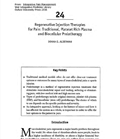
An integrative approach, looking at the history of injury and how it has affected the system as a whole, is important in order to off the best options to the patient in pain. By Donna Alderman, DO

In addition to traditional prolotherapy, platelet-rich plasma and stem cells are also available to enhance healing of musculoskeletal injuries and mitigation of pain. By Donna Alderman, DO

An effective non-surgical treatment option for golf-related injuries, includinglow back pain, lateral and medial epicondylitis, wrist ligament injuries, shoulder injuries, and other musculoskeletal joint pain.
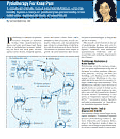
A reasonable and conservative approach to knee tendonitis/tendonosis, sprain-strains, instability, diagnosis of meniscal tear, patellofemoral pain syndrome including chrondro-malacia patellae, degenerative joint disease, and osteoarthritis pain.
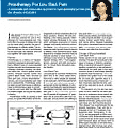
A reasonable and conservative approach to musculoskeletal low back pain, disc disease, and sciatica. By Donna Alderman, DO
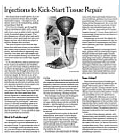
Prolotherapy involves as series of injections to produce inflamation in injured tissue.
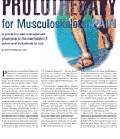
A primer for pain management physicians on the mechanism of action and indications for use. By Donna Alderman, DO
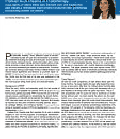
Case reports on lateral elbow pain, low back pain, and medial knee pain indicate a remarkable improvement in outcomes after prolotherapy incorporating platelet rich plasma.
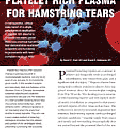
A retrospective, clinicalcase report of a singlepercutaneous applicationof platelet rich plasma toasevere traumatic partial-thickness proximal hamstringtear demonstrates sustainedsubjective and functionalimprovements with near-complete repair on MRI.
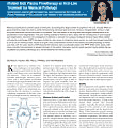
Animal research together with five patient case reports demonstrate that Platelet RichPlasma Prolotherapy (PRPP) is effective in the treatment of MRI-documented meniscal tears.
I used this product after having Platelet Rich Plasma treatments on my lower back. I felt like I healed much faster, and noticed improvement quicker than when I had previous treatments done 2 years ago. I also noticed my nails grew faster, and thicker, which was an added benefit!
I have been using Ligagenix regularly for the past few years. I started when I was getting neck injections, and noticed it not only helped with the neck but my hair, which was thinning, which began to improve. I take it at a lower level, one or two a day, for maintenance, and just feel better. Too often I have taken supplements in the past that I wasn’t sure were helping, however this one I can say for sure I feel the difference. Thank you Ligagenix!
I am very active 55 year old who still plays sports regularly every week. I have had several sport injuries and some old nagging pains. Fortunately no injury severe enough that required surgery, but severe enough to stop me from playing – some bad enough to put me on crutches for a while. I have had several Prolotherapy, PRP and Stem Cell treatments in the past 5 years. The last few treatments I took Ligagenix after my treatment and my recovery felt faster than the treatments without Ligagenix. I still take it at a lower dose, as it seems to help with my sports recovery. Overall great product.
I have been treated with Prolotherapy and PRP with great results. I have been treated on my back and wrists and shoulder. All areas dating back to sports injuries in my teens and numerous re-injuries later. A couple of years ago, while waiting for an appointment, I noticed a product called Ligagenix on the shelves and asked the receptionist about it. She told me that it was specially formulated to help speed recovery after prolotherapy or after an injury. I asked a couple of more questions since I am a bit of a sceptic and it made enough sense that I became at least convinced enough to try it. I am very glad that I did! While I am still happy and grateful to have found something (Prolo and PRP) that actually DO HEAL old injuries, I have never been entirely happy with how long the process is,probably because I am just naturally impatient...but I am quite convinced that the healing process has speeded up something like 20-25% by the daily use of Ligagenix before and after treatment. At this point, I use the product even when I am not actively recovering from a treatment. It just sort of makes my joints feel better.
Really loving this supplement! I started my Prolotherapy treatments at first without using this product, but started to notice a major improvement after taking the Ligagenix. I've seen great results with my hair skin and nails as well!
I would never have believed it, but it seems some supplements can really have a life changing affect -- I intend to keep taking yours for a long time as I am seeing steady improvement. I feel it is very beneficial for me -- my condition has improved quite a bit since I started taking this supplement.